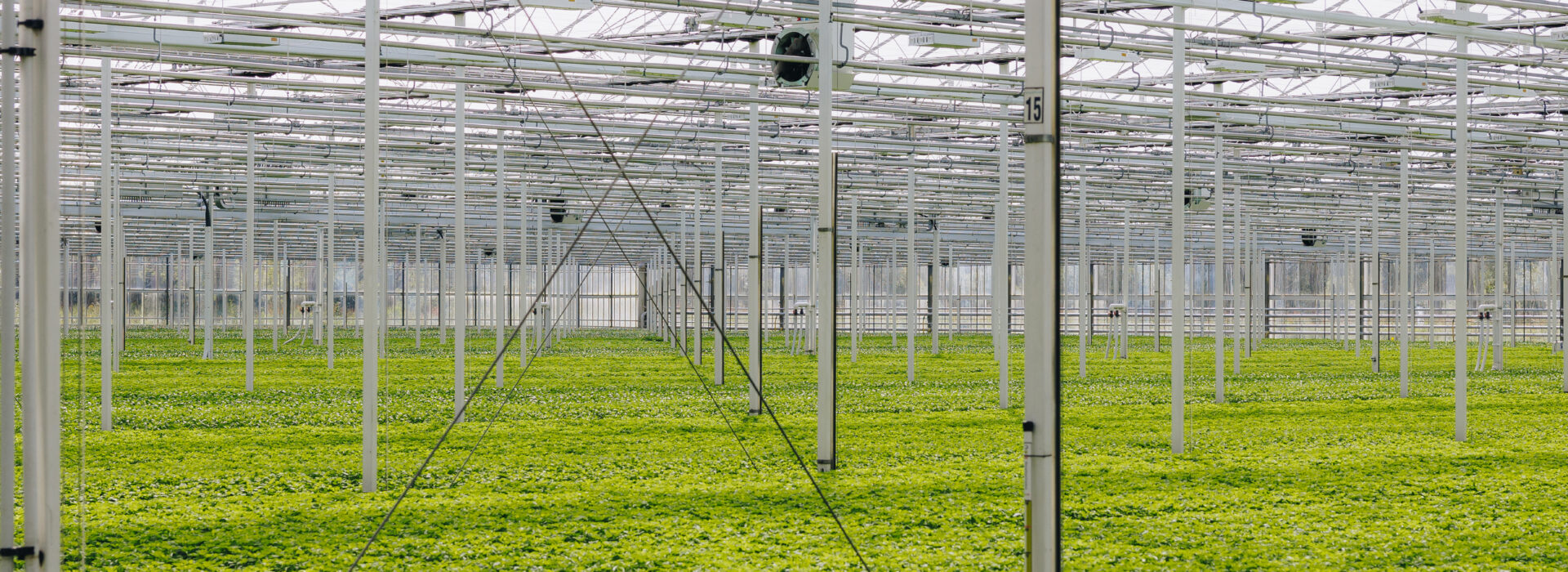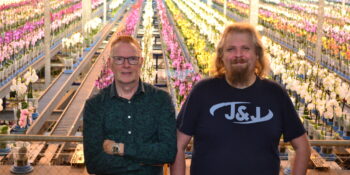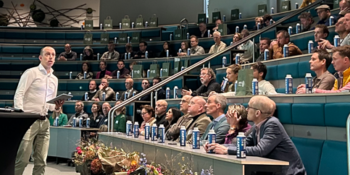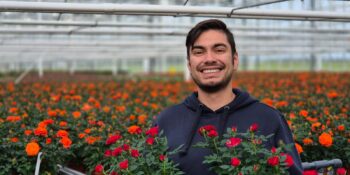When Koos Bruinen was looking after his Dipladenia crop eleven years ago, he noticed something. These plants invariably suffered from pests, but one specimen was clean. The MPS-ABC, MPS-GAP and MPS-SQ certified grower dug a little deeper and discovered that there was a particular spider on the plant that would capture the pests. Bruinen set about growing the population of the spider, with success. Following the discovery of the little creature, daughter Fleur and son Luuk have been marketing the predator under the name Little Spider for the past year.
The story of Little Spider starts in Koos and Isabelle Bruinen’s nursery. Two years after Koos discovered the “miracle spider” that was eating up almost all the pests in his crops, the population was already so widespread that the spiders were present throughout the whole greenhouse. “He was able to cut back on crop protection after three years, and now, nine years later, no chemicals are used at all,” says Fleur Bruinen.
Someone from Naktuinbouw would come to inspect the greenhouse facilities every four weeks, but they essentially only dropped by for a cup of coffee because the crops were always clean. “The inspector thought it was so special that he said we should do something with it. But Dad wanted to focus on the nursery and didn’t feel like running another business alongside it. I liked the idea myself, and, with our parent’s support, my brother Luuk and I set up Little Spider.”
Real omnivore
Fleur won’t reveal the name of the spider – after all, it’s what their entire business model revolves around. However, she says that it is an indigenous species. “It’s actually everywhere in nature, but it’s not predominant because it has too many natural enemies. But it survives in the greenhouse, provided the conditions are right.” In greenhouses, the little spider proves to be a real glutton. “It will eat pretty much any kind of insect – thrips, aphids, sciarid flies, you name it.”
Long-term project
It may seem like a miracle cure, but growers shouldn’t expect miracles straight away. “You have to be patient. First you have to bring in the nests, and then it takes another three to six months for the spiders to spread around the greenhouse. So it isn’t a product that can be used as a last resort. It’s also very important to create the right conditions in the greenhouse. Little Spider can help, but as a grower you have to think carefully about whether you’re ready for it. We would rather have ten nurseries where it’s 100 percent successful, than lots of nurseries with an 80 percent success rate. So we only want to work with businesses where it has a chance of succeeding.”
Helping people
Partly because of this, the large producers of biological crop protection have nothing to worry about in the short term, because their products combine well with the Little Spider. “Our main aim is to help people. Many of my friends are the sons of growers and had to apply crop protection agents themselves. Thanks to our little spider, they have to do much less of that now.”
However, the story of the “miracle spider” is spreading like wildfire, with more and more growers showing an interest. “When people hear about it and come to us, we want to help them too, but we don’t actively advertise.”
Other crops and other countries
Nevertheless, Fleur sees plenty of room for growth. “For example, we are also running trials in amateur greenhouses with aubergines, tomatoes, cucumbers and sweet peppers. Whereas they used to suffer from pests such as thrips and aphids, everything is clean after a while when they use the spider. Only spider mite is still a problem, because these populations can grow explosively and spread faster than the spider.”
In theory, therefore, the Little Spider can be used in various crops. An additional advantage is that the beneficial spider doesn’t enter the trade on the plants. “If you touch the plant it is sitting on, it falls off out of self-protection. This means you can supply plants that haven’t been treated with pesticides and yet are still free from insects and other creatures – perfect for export.”
Export could also have potential for the spider itself – but reducing pesticide use is more important to Fleur Bruinen than the international growth of her business. “We don’t have to save the whole world. The most important thing is that we can help people use less chemistry and more biology. That’s the mission of Little Spider.”



